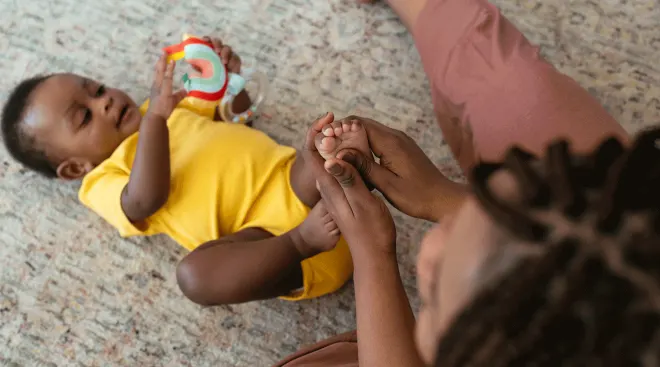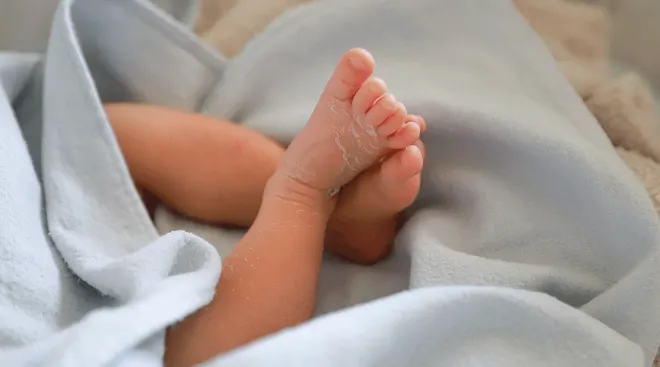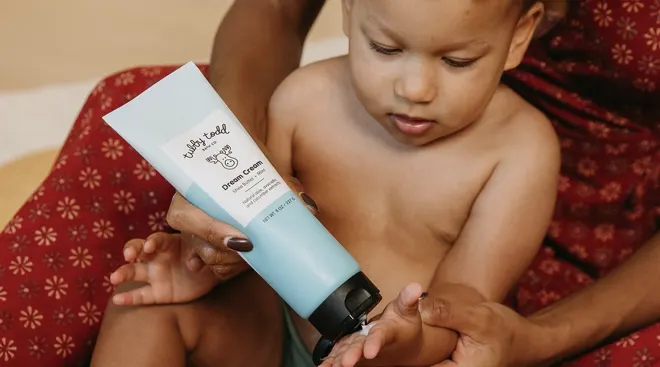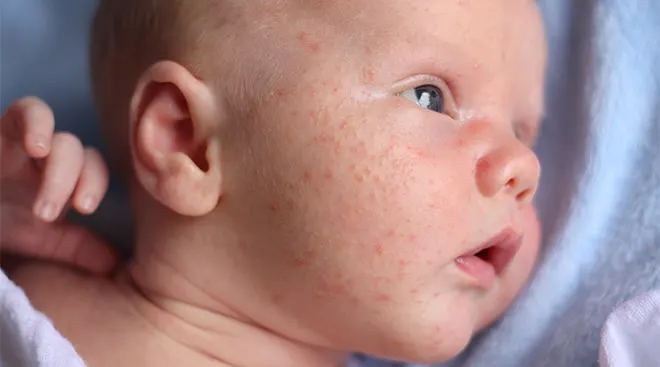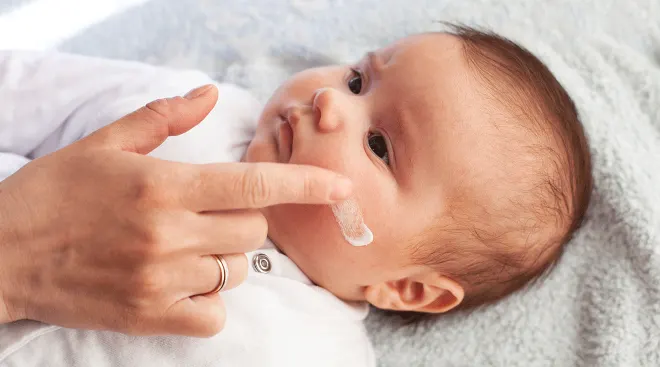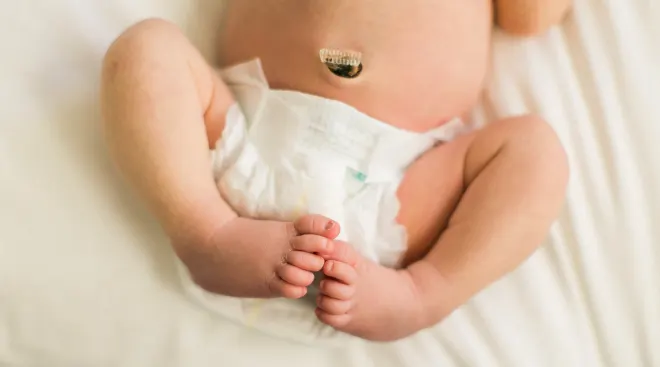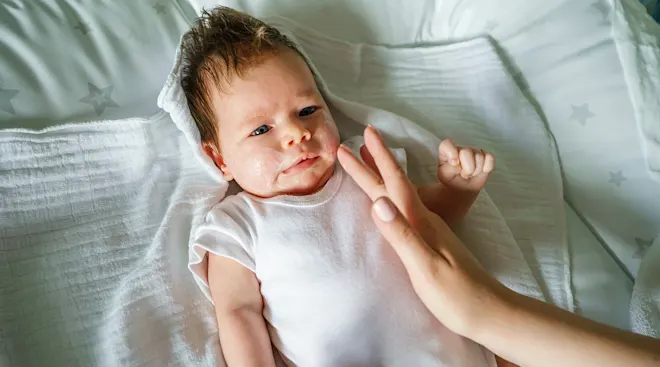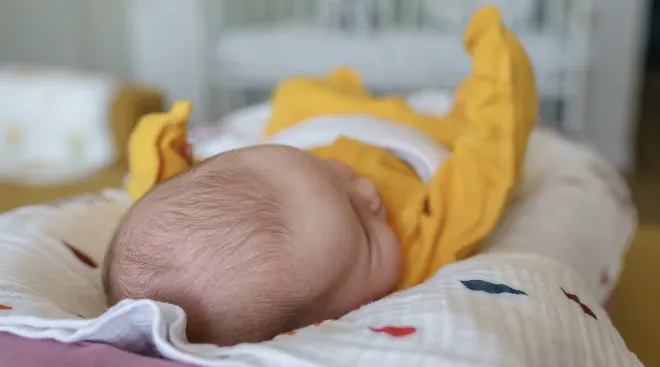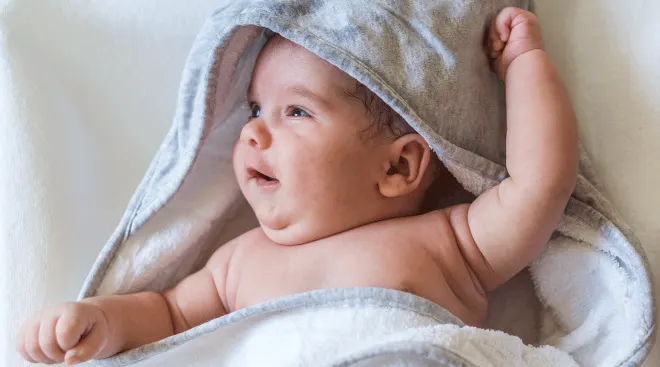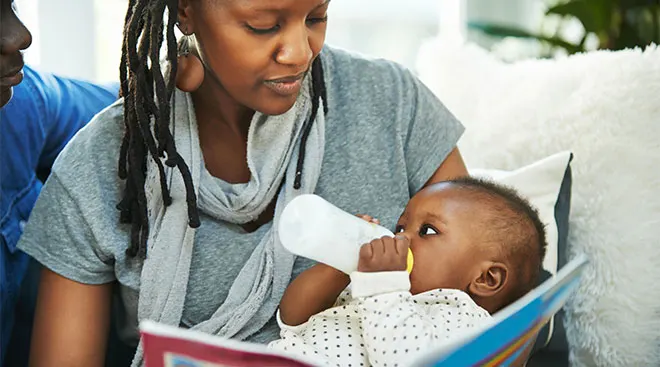Will Baby Always Have an Outie Belly Button?
Caring for baby’s umbilical cord is an important part of those first few days after birth. As the stump starts to heal, you’ll start to notice whether baby has an innie vs. outie belly button—and if it’s the latter, you may find yourself asking questions like: “Why does baby have an outie belly button?” “What’s causing this?” and “Do I need to see the pediatrician?” Rest assured, an outie belly button in babies is not a cause for concern. Keep reading to learn from the experts about what factors play a role in the development of baby’s belly button, what causes an outie belly button, whether there’s anything you can do to reverse it and when to see your pediatrician.
According to the American Academy of Pediatrics (AAP), a belly button (medically known as an umbilicus) is the healed skin tissue that’s left once the umbilical cord—which is clamped at birth—dries up and falls off. While belly buttons come in all shapes and sizes, they generally fall into one of two camps: innie vs. outie belly buttons.
Innie belly buttons occur when the skin of the umbilicus goes in when it heals. In outie belly buttons, the skin of the navel sticks out and gives the appearance of a knot. About 10 percent of newborns develop outie belly buttons, while the other 90 percent have innie belly buttons, says Denise Scott, MD, an Oklahoma-based pediatrician and expert with JustAnswer. There’s nothing you can do to cause an innie or outie belly button, but a person’s belly button shape and size may change later on in life, based on their weight and any pregnancy history, says Stephanie Langsam, MD, an ob-gyn at Main Line Health in Pennsylvania.
There’s really no way to know if baby will have an innie or an outie belly button—and neither has anything to do with how the umbilical cord was clamped or cared for after birth, Scott says. Wondering if genetics play a role? According to Scott, they don’t. In fact, both she and Langsam say it depends mostly on how the umbilical cord was naturally attached to the abdomen and how it heals. The scar tissue that’s left once the umbilical cord stump falls off is usually in the depression of the belly button, but it may cause the skin around it to project out, “creating the appearance of an innie or an outie,” Langsam adds. There are also few other factors from the natural healing process that can contribute to an outie belly button in babies:
-
A local infection at the site of baby’s umbilical cord: According to Scott and Langsam, if the site does get infected, it can cause additional scar tissue to form, which can then push skin out further and cause an outie belly button. “Once the scar heals, there is no way to change the appearance [of baby’s belly button],” Langsam says.
-
Umbilical granuloma: According to the AAP, an umbilical granuloma is a small, reddened mass of tissue that stays on the belly button, and may ooze fluid, after the umbilical cord has fallen off. It should go away on its own, but still flag it to your pediatrician, Scott says. If it doesn’t resolve on its own, your pediatrician may need to cauterize it.
-
Infant umbilical hernia: According to the AAP, these occur in around 20 percent of newborns and usually don’t cause any issues. An umbilical hernia occurs when the muscles around the belly button don’t fully close, resulting in a small opening in baby’s abdominal wall (under their belly button). This may cause a part of baby’s intestines to pop out into a hernia sac covered by skin. If baby has an umbilical hernia, parents may see a bulge on their belly. This bulge will typically come and go, becoming more noticeable when baby is coughing, crying or straining to have a bowel movement. While you should loop your pediatrician in, rest assured that 90 percent of umbilical hernias in babies close on their own by the time your kiddo is 4 to 5 years old with no treatment, the AAP says. (More on this below.)
According to Scott, sometimes when an umbilical hernia closes on its own, the outie belly button may go in, but for the most part, there’s not a lot parents can do. “As long as the hernia is small, less than 1 to 2 cm in diameter, it just takes time and patience,” she says. “Nothing a parent does will hurry the process.” Langsam agrees, noting that baby’s belly button appearance is largely out of everyone’s control and will depend on how their stump naturally falls off and heals.
Scott also adds that parents shouldn’t be alarmed if the belly button “pops out” a little anytime baby “cries, poops or bears down with their belly,” as it’ll go back in once baby relaxes. “This is entirely normal,” she says, but reach out to your pediatrician with any concerns. The one thing experts say not to do? Try to make baby’s outie belly button go in with coins, tapes, binders or anything else. “We do not recommend placing tape or a taped coin or anything over the belly button to keep it from protruding. This will not help it to close any faster,” Scott says.
For the most part, an outie belly button in babies is nothing to worry about, as long as baby’s navel is healing well and without infection. That said, if baby does develop an infection or an umbilical granuloma, it’s best to let your pediatrician know, Scott says.
Another reason to contact the pediatrician is the presence of a large umbilical hernia in baby (more than 2 cm in diameter), which can cause organs to get trapped in the hernia sac, reducing their blood flow. In these cases, the bulge on baby’s belly would always be visible, may be red in color and may even cause severe pain and sensitivity. According to the AAP, if baby is suffering from a severe umbilical hernia, they may also have a fever, vomit or refuse feeding. For these situations, it’s important to seek immediate medical attention. But rest assured, while experts say these cases can be serious, they are also very rare. Most infant umbilical hernias are too small to pose a medical emergency and will close on their own by the time baby is 4 to 5 years old. However, if it doesn’t, surgery—which is the only medical treatment for an umbilical hernia—may be required to fix it.
The bottom line? As long as baby’s umbilical cord and navel are healing well, an outie belly button isn’t anything to worry about. But if you have any questions or concerns, don’t hesitate to flag them to your pediatrician.
Please note: The Bump and the materials and information it contains are not intended to, and do not constitute, medical or other health advice or diagnosis and should not be used as such. You should always consult with a qualified physician or health professional about your specific circumstances.
Plus, more from The Bump:
Stephanie Langsam, MD, is an ob-gyn at Main Line Health in Pennsylvania. She earned her medical degree from the Technion Israel Institute of Technology in Haifa, Israel and completed her residency at Lankenau Medical Center in Pennsylvania.
Denise Scott, MD, is a pediatrician with JustAnswer and a pediatric endocrinologist based in Oklahoma with over 30 years of experience. Certified in culinary medicine, Scott also runs the blog Feed Future Health and is the author of Feed Your Child's Future Health: Prevent Disease before it Starts. She received her medical degree from the University of Texas Medical Branch and completed her residency at the University of Oklahoma Health Sciences Center, with a fellowship at the National Institutes of Health.
Healthy Children (American Academy of Pediatrics), Umbilical Cord Care, December 2020
Healthy Children (American Academy of Pediatrics), Umbilical Hernia in Babies & Children, December 2020
Learn how we ensure the accuracy of our content through our editorial and medical review process.
Navigate forward to interact with the calendar and select a date. Press the question mark key to get the keyboard shortcuts for changing dates.










































